Types of Tulips
Today, there are thousands of cultivars and hybrid tulips with registered commercial names. Although botanists organize tulips by genus, species and cultivar, the bulb catalogs that arrive in your mailbox every summer describe tulips according to 15 groups. These groups are defined by shape, heritage and flowering time. Some groups include tulips that have been in commercial production since the beginning of the 18th century.
Here’s an illustrated overview of these 15 groups, with a few examples of the cultivars that belong to each one.
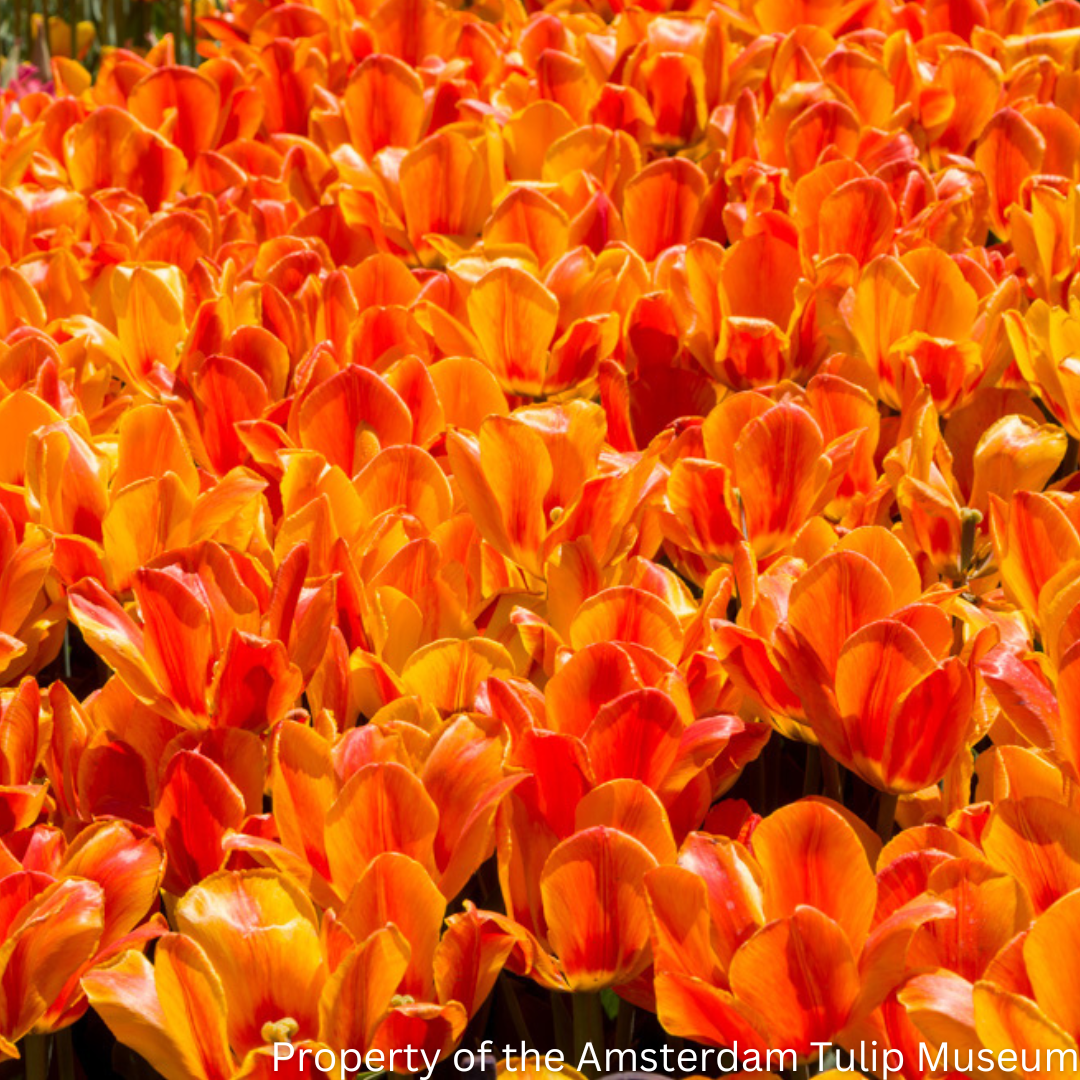
Group 1: Single Early
Single early tulips flower in mid-spring with relatively large, round flowers, and neat foliage. They have short, sturdy stems that are no more than 16 inches tall. This smaller stature makes them ideal for containers. Many cultivars still in production date back to the mid-19th century along with a few cultivars that first appeared in the early 18th century.
Examples include the Flair (shown) and Pretty Princess and Princess Irene.
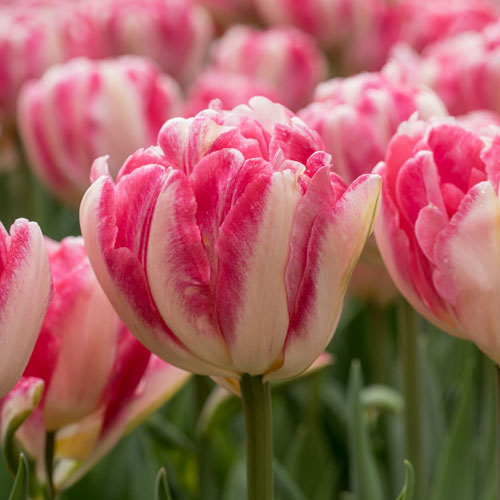
Group 2: Double Early
Double-flowered tulips are shorter, bloom a little later and hold their flowers longer than their single counterparts. The long-lasting blossoms have so many petals that they resemble peonies! The large, heavy blooms sometimes require staking.
The Foxtrot (pictured), Abba, Monte Carlo, and Orca are all tulips that belong to the Double Early group.

Group 3: Triumph
Robust, mid-season tulips created by crossing early and late varieties, Triumphs form a widely varied group that offers everything from compact, rounded flowers to those with long, slightly flared petals. These flowers bloom on strong, upright stems standing 16-20 inches high.
Examples of the Triumph group are the Dynasty (pictured), Alibi, Negrita, Dreaming Maid and Early Glory.
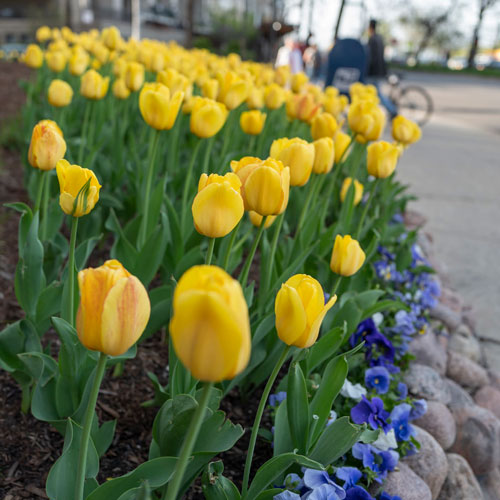
Group 4: Darwin Hybrid
These mid-season giants are a 20th century innovation created by the brilliant breeder Dirk Lefeber, who crossed 19th century Darwins with Tulipa fosteriana. Known for their giant, pyramid-shaped buds and their height. Darwin Hybrids are best massed in beds or as long-lasting cut flowers, and tend to be warm colors like yellow, pink and red. Certain varieties will perennialize if their foliage is allowed to die back naturally.
Some of the hybrid tulips that belong to this group include the Beauty of Spring, Parade, Pink Impression, Daydream and Golden Parade (pictured).

Group 5: Single Late
Regal and tall, Single Late tulips bear relatively delicate, orbed flowers on stems of 24 inches or more. Created in the 20th century through a series of hybrid crosses, these the elegant flowers win admirers everywhere they are planted. Single Late tulips can be found in a wide range of vivid hues, including the Queen of Night (pictured), whose deep purple petals are some of the darkest shades found in tulips. As the name suggests, tulips in this group tend to bloom later than all the rest.
Other commercial hybrids in this group include the Violet Beauty, Sorbet and Maureen.
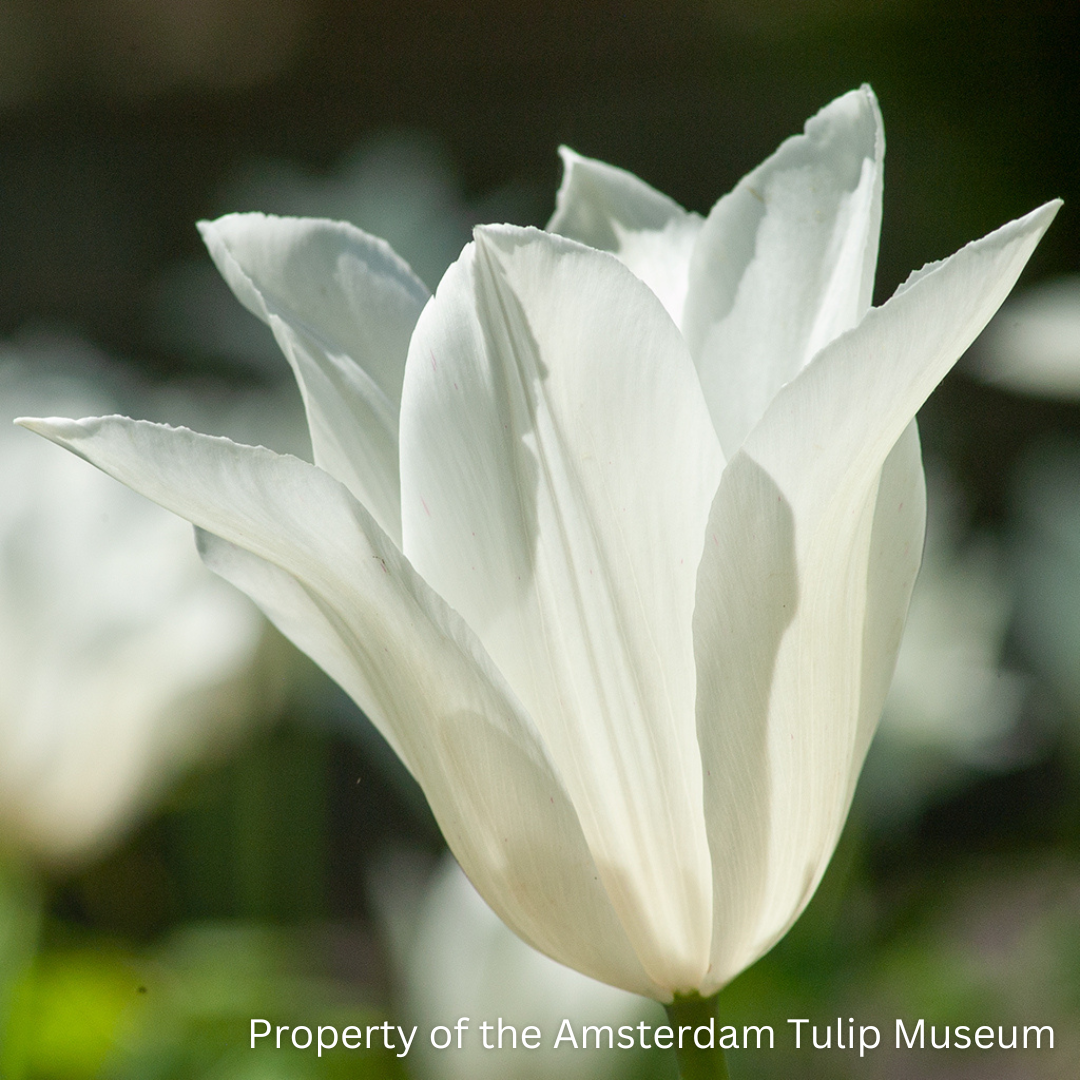
Group 6: Lily-Flowered
Lily-flowered tulips bloom in mid-to-late spring, and while they come in fewer colors than other groups, their delicate petals end at a point and are often trimmed in contrasting colors. These slender, beautifully flared tulips rise on narrow stems that bend and sway gracefully with even the slightest breeze. Some cultivars are evocative of the pointed tulips that were so beloved in the Ottoman Empire, while others resemble lilies much more closely.
Examples of the Lily-flowered tulip group include the Mariette, Fly Away, Aladdin, and White Triumphator (pictured).
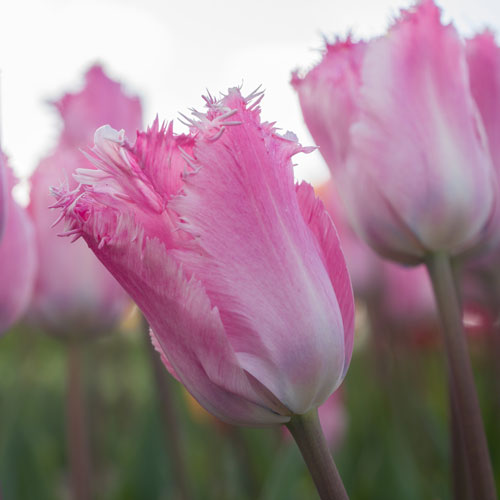
Group 7: Fringed
Fringed tulips arose from mutations within other groups and as a result, bloom at varied times, rising on stems that range from short to tall. With petals that may be delicately crimped, wildly cut, or even feathery, they bring a startling beauty to gardens wherever they are planted.
You’ll find fringed tulips like the white Swan Wings, the purple Cummins, the pink Bell Song and the Santander (pictured).
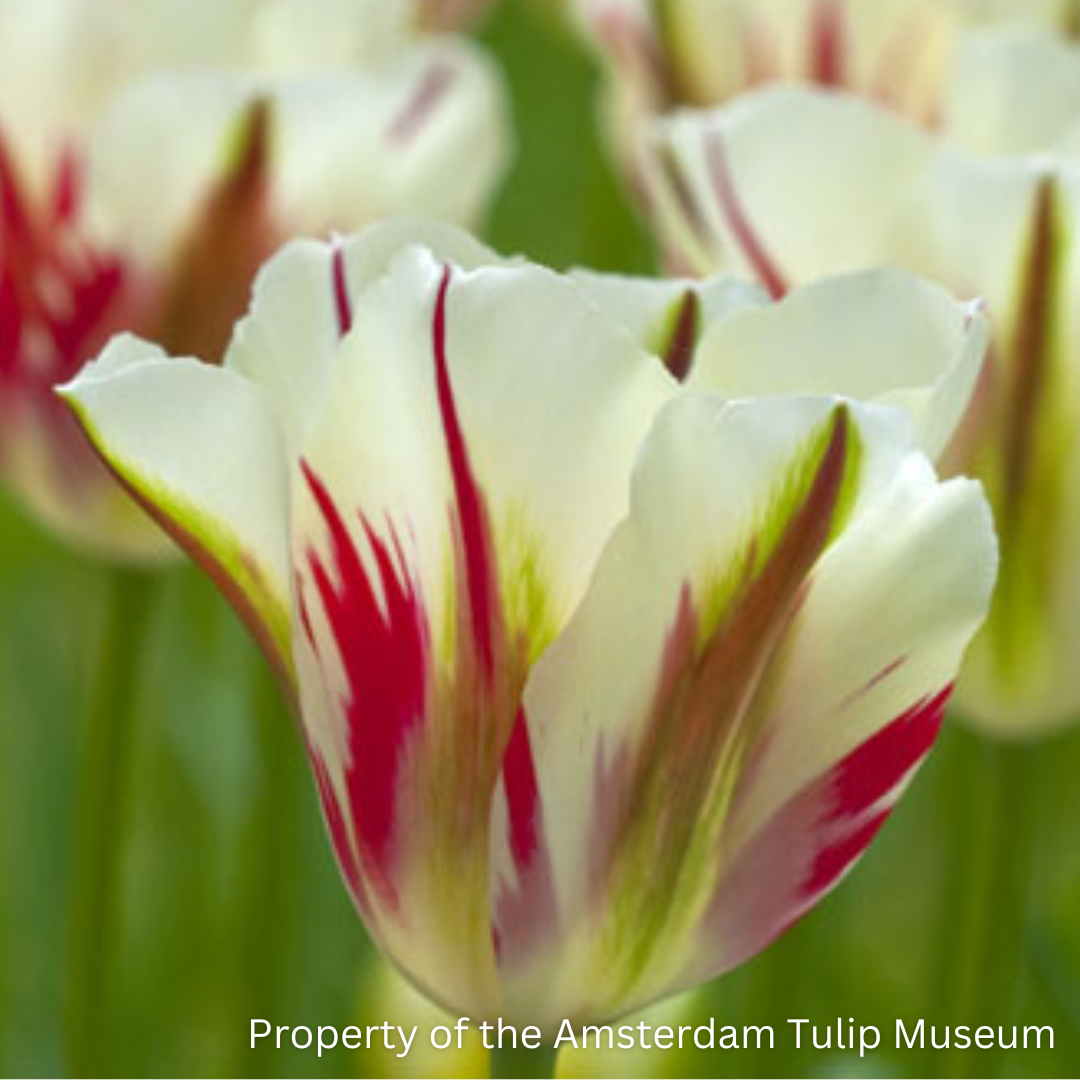
Group 8: Viridiflora
Tulips in this group open late in the season with green buds that gradually reveal their base color while the petals retain a vivid green steak from base to tip. The form of these flowers is varied enough to include single, double, parrot and lily shaped blossoms on stems that range from 12 to 20 inches.
Commonly found commercial types of Viridiflora include the Artist, Hollywood Star, Formosa, and Flaming Spring Green (pictured).
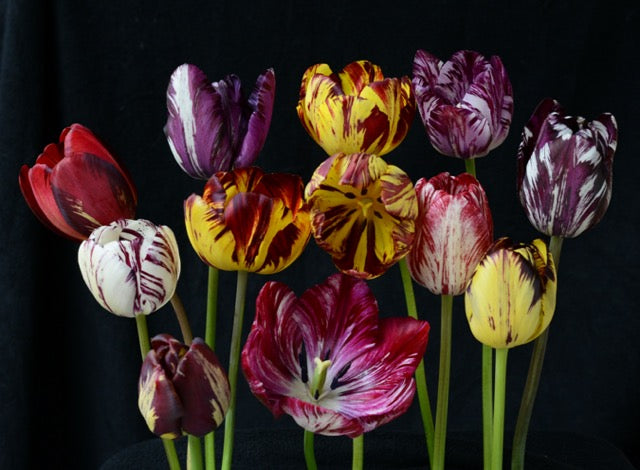
Group 9: Rembrandt
Although Rembrandt Harmenszoon van Rijn is not known for his tulip paintings, he was the leading painter of the Dutch Golden Age, and bi-colored flamed tulips that resemble the famous broken tulips of that era are collectively referred to as Rembrandts. Large commercial growers no longer sell true broken tulips, but this group offers the closest approximation that gardeners can buy today. The Rembrandt’s flamed and feathered petals are stable mutants of healthy plants from many of other groups. They come in a variety of shapes and sizes and bloom from early spring until late in the tulip season.
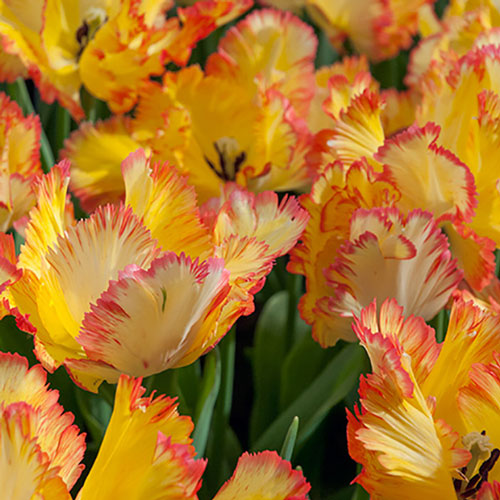
Group 10: Parrot
Parrot tulips are as flamboyant as their name suggests, with elaborately cut, curled and ruffled single petals in a wide range of colors and patterns. These gorgeous flowers mutated from Triumph tulips and bloom late on stems from 16 to 24 inches tall.
Some examples of parrot tulips include the Estella Rijnveld, the Flaming Parrot and the Rococo. The tulip pictured here is called a Caribbean Parrot.
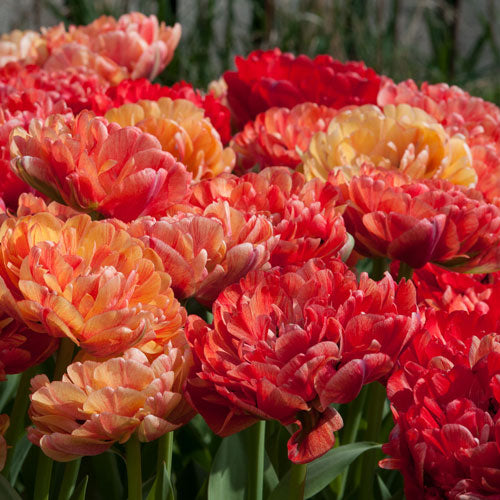
Group 11: Double Late
Showy flowers, Double Late tulips have rounder blossoms than their earlier-blooming cousins and usually much taller. They flower in May in a wide range of colors and patterns, with blooms that sometimes even resemble roses.
Examples of this group include the Cretaceous, and Moris Gudanov (pictured).
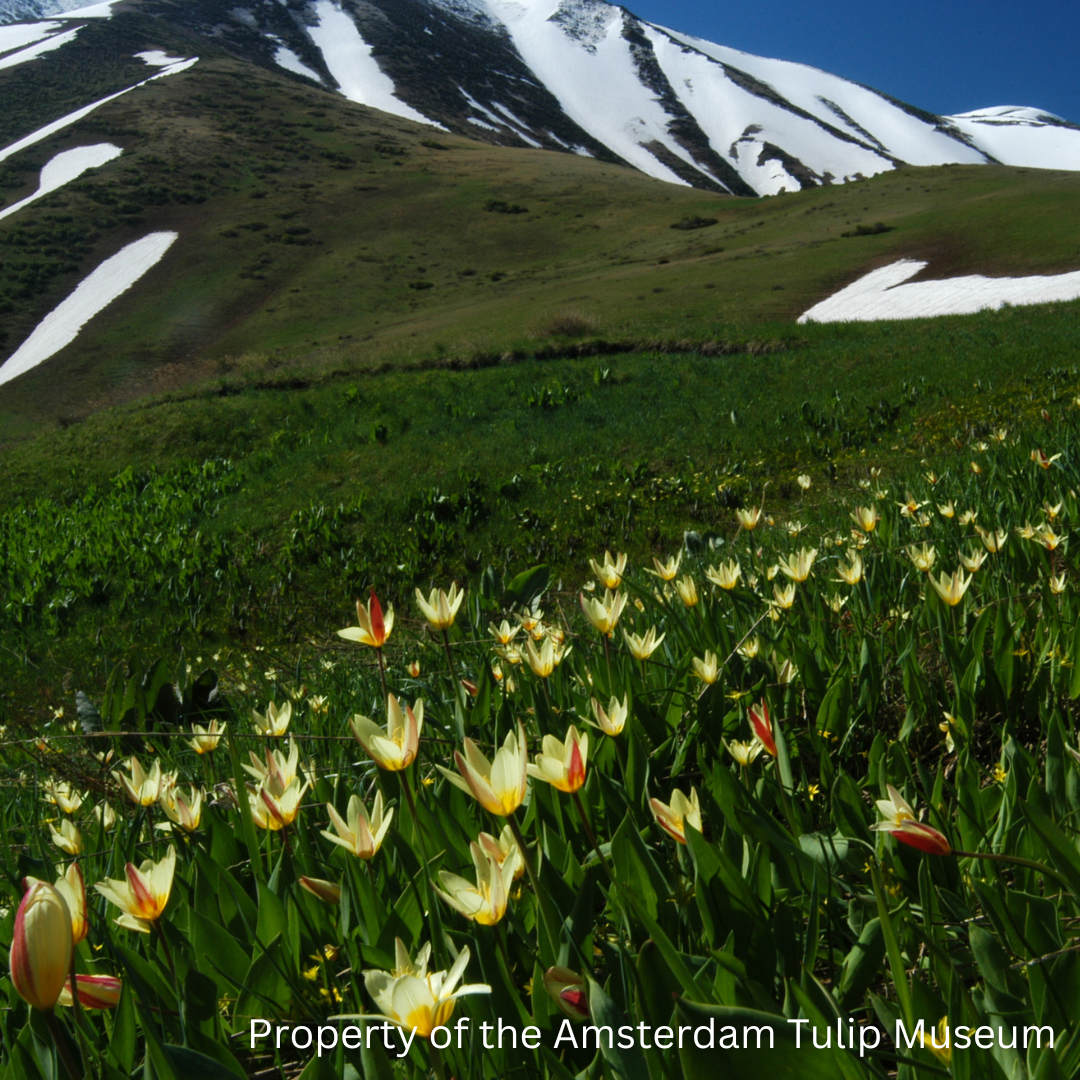
Group 12: Kaufmanniana
Petite and very early flowering, Kaufmanninnas are often distinguished by beautifully mottled foliage with bi-colored flowers that open flat close to the ground. They are often called ‘water lily tulips’ for their resemblance to the aquatic flowers that are no relation at all.
Examples of Kaufmanniana tulips include the yellow and red Giuseppe Verdi, and the pink and white Heart’s Delight.
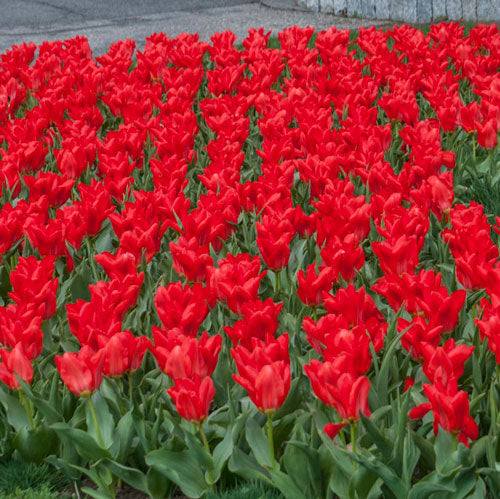
Group 13: Fosteriana
Also known as Emperor tulips, these broad-leafed plants stand from 10 to 16 inches high with unusually large flowers. Like Kaufmanninnas, they flower early in striking single colors.
The most famous of the Fosteriana tulips is the Red Emperor (pictured), which was originally introduced as Madame Lefeber and goes by both names today.

Group 14: Greigii
Another petite tulip, Greigiis (pronounced GREG-ee-eye) feature distinctive mottled or striped foliage that spreads close to the earth. The relatively large flowers on short, sturdy stems flower early, but a bit later than Kaufmanninnas or Fosterianas. Their compact size makes them a good choice for small container gardens.
Sometimes called dwarf tulips, this group includes the Winnipeg, the Pinocchio and the Red Riding Hood and the Casa Grande (pictured).
Group 15: Miscellaneous
As the name suggests, this category covers a wide range of varieties and cultivars with that don’t quite fit any other grouping. For the most part, these are low growing, small-flowered tulips with a delicate charm, though occasionally members of the group will raise their petals high. They flower from early to late in the season, depending on the specific variety.

